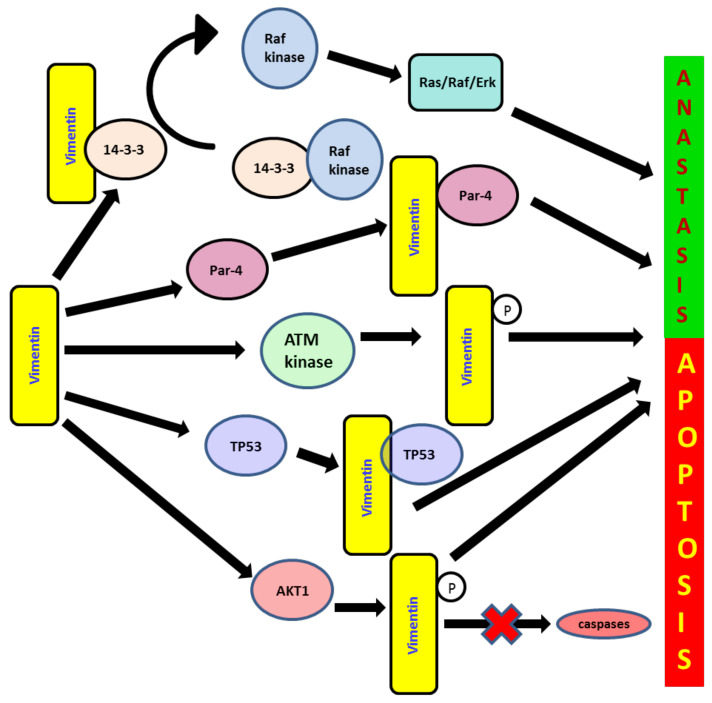Figure 3.
Loss of apoptosis and anastasis, “recovery from the brim of death”, are the important tools employed by cancer cells to progress, resist therapeutic agents and sustain the complex microenvironmental factors. Vimentin deregulates apoptosis and consequently supports cancer growth via its interaction through 14-3-3 protein-mediated mechanisms and prevents its free availability to regulate different molecular cascades of apoptosis, cell cycle and cancer development via oncogenic Raf, Bad, Bax Cdc25 and AKT interactions. It also binds to the protein prostate apoptosis response-4 (Par-4), preventing its secretion and consequently disrupting its apoptotic activities. It is a key downstream effector of ATM-mediated signalling cascades to inhibit apoptotic events during the DNA damage response to chemotherapeutic agents, and it upregulates early cell migration and the related escape from apoptotic death. It also induces nuclear translocation of cytoplasmic p53, thus causing downregulation of p53-mediated apoptosis.

